Living in London, it’s remarkably easy to forget quite how strange a place it is. It is chaotic, an organic development of old ways that become ever more bunched up and claustrophobic the closer you get to its historic centre, the City. Here, glistening monuments to high finance share their plots with Christopher Wren churches and the last remnants of the medieval city; alleys shoot off into silent courtyards, which in turn give way to loading zones behind 1970s office blocks. In the 350 years since the Great Fire, this part of the capital has been shaped into an unknowable warren: you could prowl its curiously named streets – Pope’s Head Alley, Queenhithe, Garlick Hill – every day for a lifetime and still get lost.
A few weeks ago, doubling back down a hive of alleys south of the Bank of England, I found myself very lost indeed. I must have been this way at least a dozen times over the years, but still, here I was, absolutely stumped and rather happy about it. I was in the City following the Stations of the Cross trail, an inventive new exhibition that does not lend itself to easy summary. Essentially, it is a walking trail around the old cities of London and Westminster, that traces the 14 stations of the cross – a devotional route commemorating Christ’s suffering on the way to Calvary. Each station is represented by a work of art – some pre-existing, others specially commissioned – that in some way relates to an event in the story of the Passion.
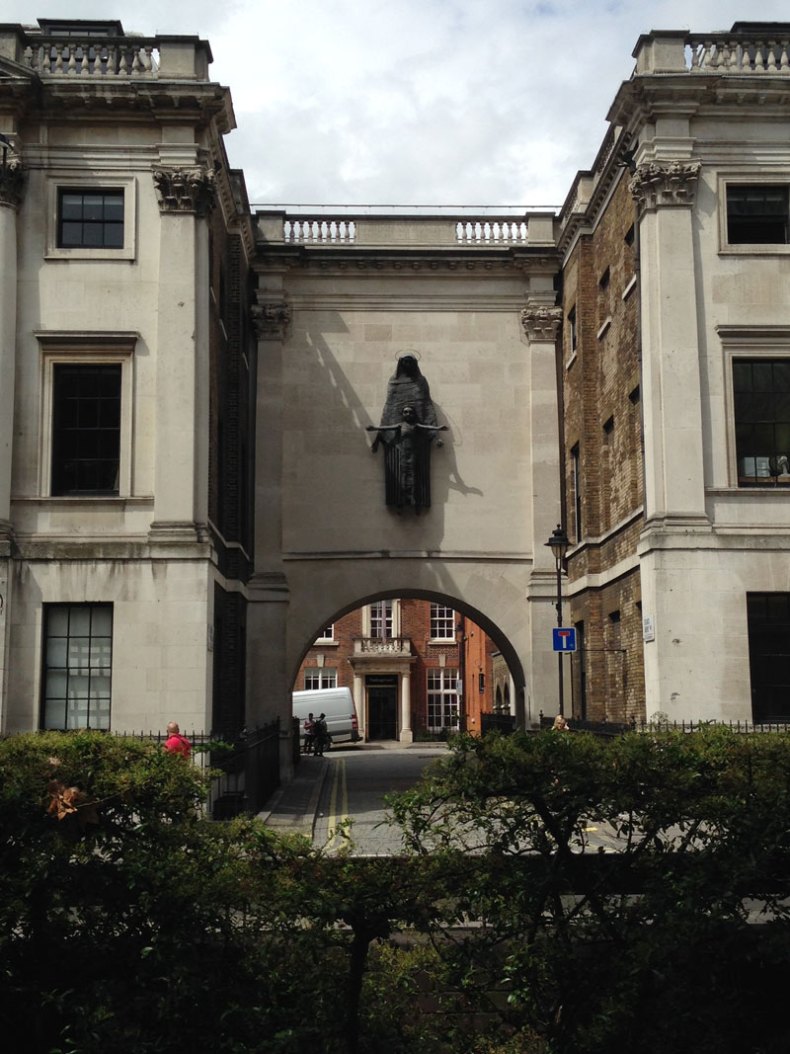
Madonna and Child (1950–52), Jacob Epstein. Photo: Aaron Rosen
Beginning at the chapel of King’s College London on the Strand (in which hangs Terry Duffy’s widely exhibited Victim, No Resurrection? from 1981) you wind your way through town along a haphazard and gratifyingly confusing path, following the trail in whichever order takes your fancy. Along the way, you see some wonderful things: a French depiction, inspired by Durer, of Simon of Cyrene helping Jesus carry the cross at the Wallace Collection; Jean Cocteau’s vision of Jesus meeting the women of Jerusalem at Notre Dame de France in Soho; Epstein’s terrifying sculpture of an emaciated Madonna and Child in Cavendish Square. But what really impresses is the ambition to organise these disparate works into cartographic continuity. It’s a psychogeographical Easter Egg hunt, a crooked squiggle across the familiar map of the city.
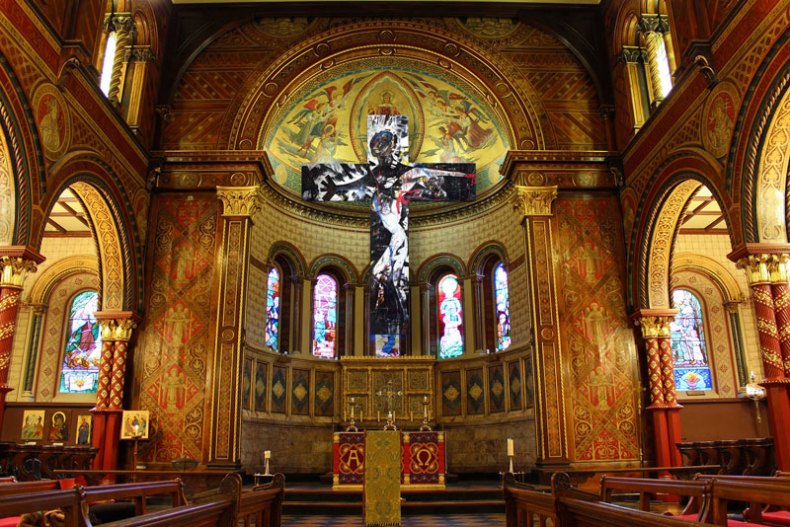
Victim, No Resurrection? (1981), Terry Duffy.
‘I wanted to find a way of experiencing London as a sacred city,’ says Aaron Rosen, the project’s co-curator, ‘and this was a nice way to stitch together existing things with new commissions.’ There’s more to it than that, though. The map’s suggested, but non-prescriptive route made me think of the work of French Jesuit scholar Michel de Certeau, whose Practice of Everyday Life imagined cities as almost dictatorial structures to be subverted by the sort of ludic path proposed by the Stations project. Rosen agrees: ‘London is a city where residents want to think about spectres of the past,’ he says. And by following the trail, however you choose to do so, you are ‘claiming a ritualistic path through the city.’
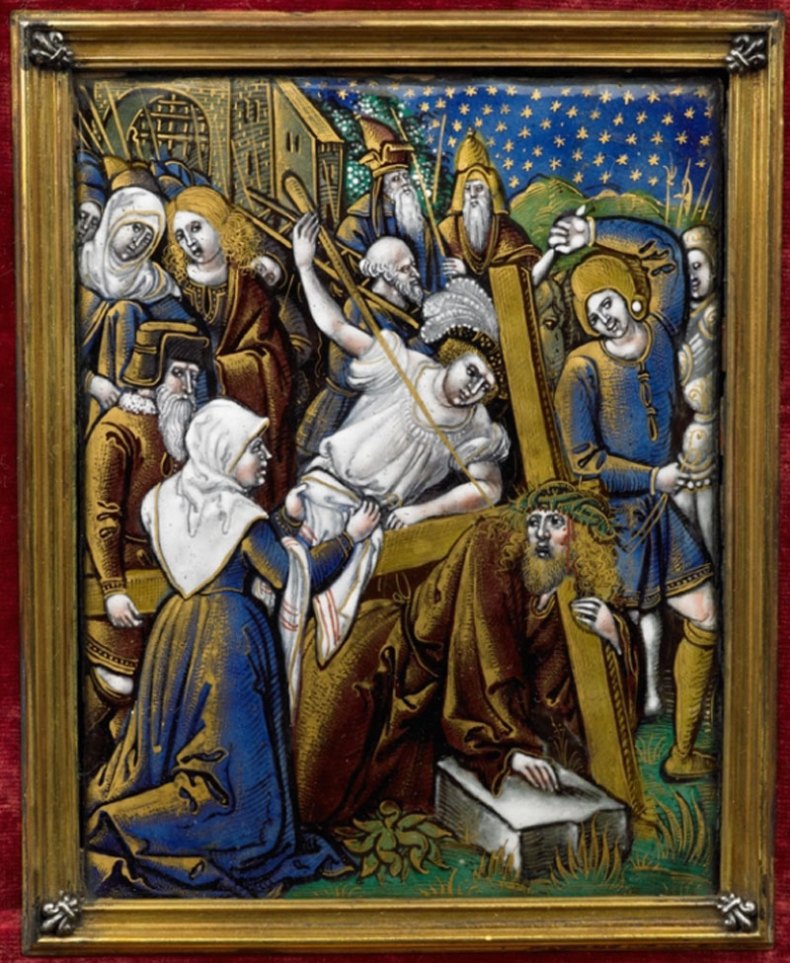
Simon of Cyrene helps Jesus carry the cross. One of 24 plaques after Albrecht Dürer’s Small Passion Woodcut Series (c. 1570–c.1625), Limoges, France. Wallace Collection
I’m largely ambivalent towards most contemporary art in religious buildings: Bill Viola’s Martyrs (Earth, Air, Fire, Water) video at St Paul’s Cathedral (itself one of the stations on the trail) left me cold when it was unveiled in 2014, while the less said of Antony Gormley’s various church commissions, the better. But Rosen has chosen the artists for the various sites well. G. Roland Biermann’s installation, representing Jesus falling for the third time, consists of two metal beams leaning against a huge stack of red oil barrels, overlapping with one another to form the shape of a cross tilted on its side. It’s remarkably effective in front of St Giles Cripplegate, that most incongruous relic in the brutalist Barbican complex. Michael Takeo Magruder’s video work Lamentation for the Forsaken, which references Jesus being taken down from the cross, pulsates spectrally from a quiet corner of St Stephen Walbrook, coaxing the viewer into trance like contemplation.

Stations (2016), G. Roland Biermann
The trail is described as a ‘pilgrimage’ – a loaded term if ever there was one – but as Rosen (who is Jewish himself) stresses, we mustn’t think of it as a denominationally specific exercise. Indeed, the artists commissioned come variously from Muslim, Jewish and Christian backgrounds.
To my mind, though, this isn’t so much about art or religion as seeing London itself – which, despite its Christian past, is a secular city – in a different light. What lies beyond the strangely angled alleys that snake off the main roads? What is the source of the Goswell Road? What goes on between Fleet Street and the river? Now’s your chance to find out. This is a jeu de l’oie of the sort Jacques Rivette invented for Paris with his cult 1981 film Le Pont du Nord. Play it soon.
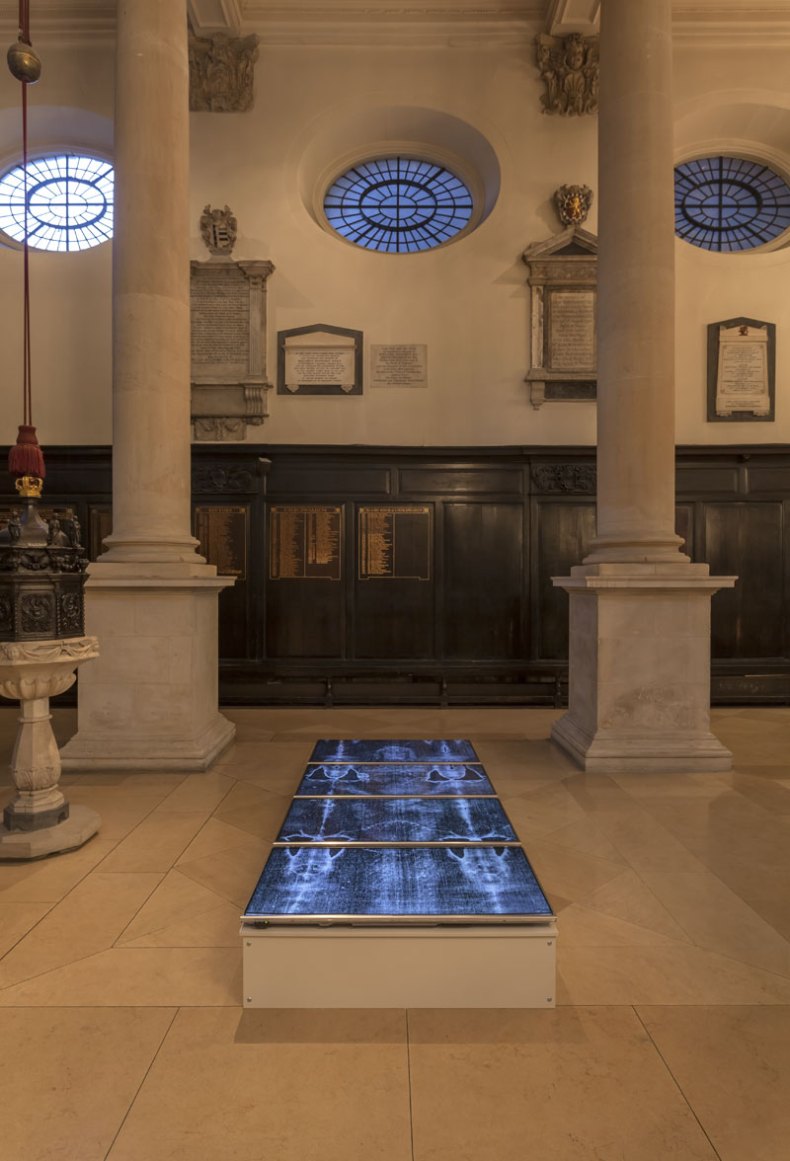
Lamentation for the Forsaken (2016), Michael Takeo Magruder
Stations of the Cross runs until Easter Monday, 28 March.
Unlimited access from just $16 every 3 months
Subscribe to get unlimited and exclusive access to the top art stories, interviews and exhibition reviews.

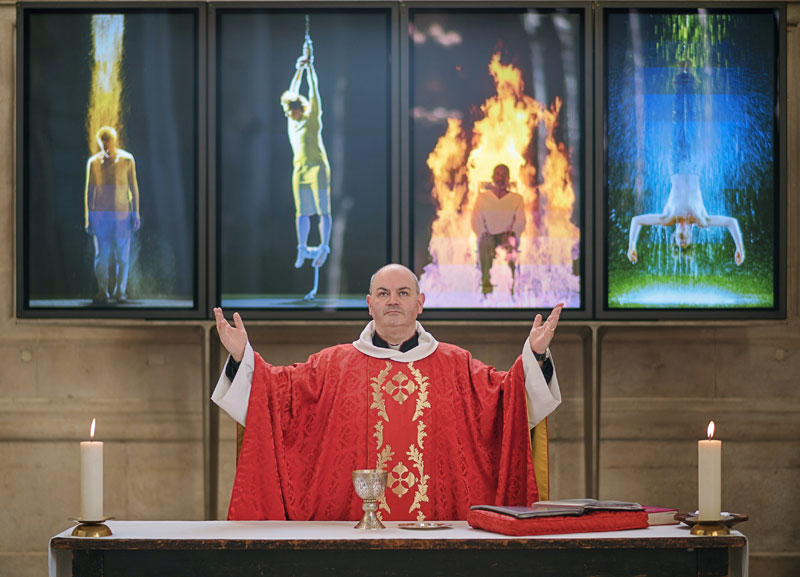
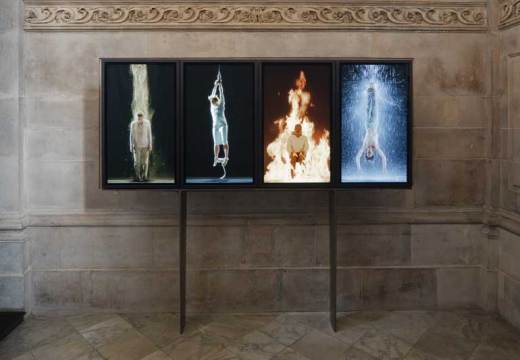
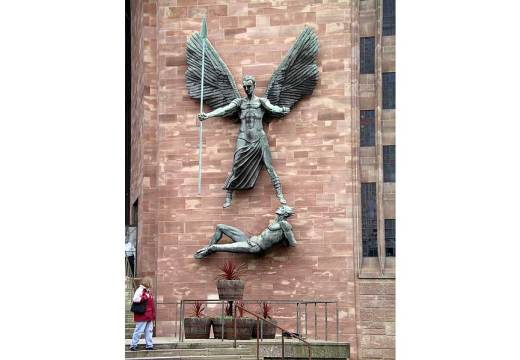
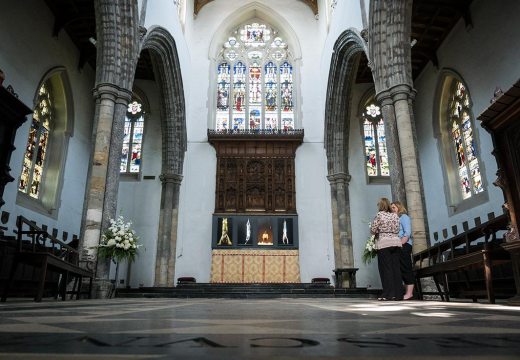









![Masterpiece [Re]discovery 2022. Photo: Ben Fisher Photography, courtesy of Masterpiece London](http://www.apollo-magazine.com/wp-content/uploads/2022/07/MPL2022_4263.jpg)
It’s time for the government of London to return to its rightful home